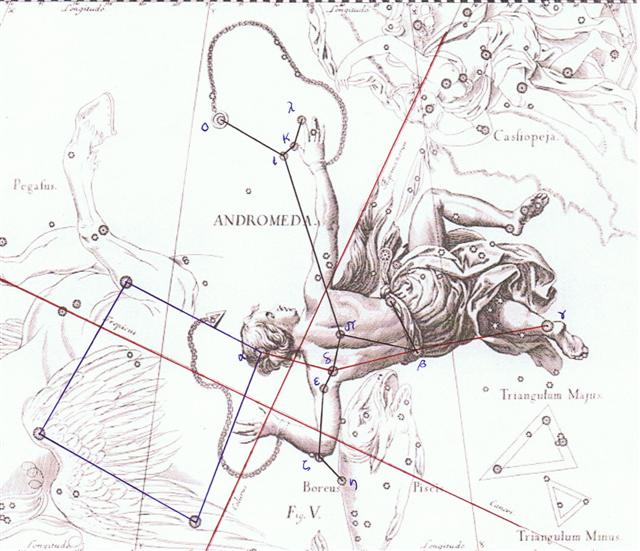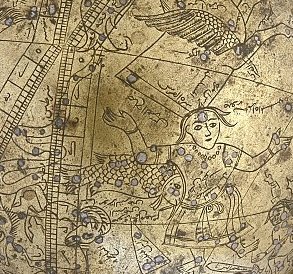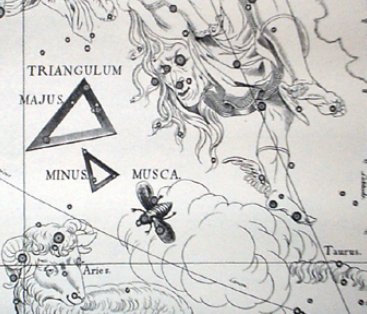There are no kahi glyphs in the G text and
its creator instead used vaha mea (red opening) without internal marks, first of all at
heliacal Aldebaran:
|
0h |
MARCH 22
(*1) |
23 (82) |
|
no glyph |
 |
 |
|
Ga1-1 |
Ga1-2 |
|
HYADUM II
= δ╣ Tauri
(64.2) |
Net-19
AIN
(Eye)
= ε Tauri,
θ╣ Tauri, θ▓ Tauri
(65.7) |
no star
listed (66) |
|
May 24 |
25 (145) |
26 (*66) |
|
NAKSHATRA
DATES: |
|
SEPTEMBER 20
(*183) |
21 (264) |
EQUINOX |
|
Heart-5
σ
SCORPII (247.0),
HEJIAN = γ Herculis
(247.2), ψ Ophiuchi (247.7) |
ρ Ophiuchi (248.1),
KAJAM = ω
Herculis (248.3), χ
Ophiuchi (248.5),
SHE LOW
(Market Tower) = υ Ophiuchi,
Tr. Austr. (248.7), ζ Tr. Austr. (248.8) |
Al Kalb-16
/
Jyeshtha-18
/
ANA-MUA-1 (Entrance pillar)
ANTARES
= α Scorpii (249.1),
MARFIK = λ Ophiuchi,
φ Ophiuchi (249.5), ω Ophiuchi (249.8) |
|
November 23
(327) |
24 |
25 (*249) |
But Ana-muri was the rear star pillar and this
name reveals it was at the back side of the year - i.e. as
viewed from south of the equator.
The end of side b of the
tablet was probably designed to describe how the northern spring
equinox had gradually changed from the time of the Bull and up
to rongorongo times. Therefore there was a similarity between
the
vaha mea door at Aldebaran and the vaha mea door at Sheratan:

 |
 |
39 |
 |
 |
|
Gb7-24 |
Gb7-25 |
Ga1-3 |
Ga1-4 |
|
April 16
(*391) |
17 (472 =
365 + 107) |
May 27
(*432) |
28 (513 =
365 + 148) |
|
'March 20
(*364) |
21 (445 =
472 - 27) |
MARCH 24
(*368) |
25 (449 = 365 + 84) |
The heliacal reading at the end
of side b continued on to Aldebaran at the beginning on side a.
Furthermore, the design of vaha mea
in Ga1-4 contrasted with the design at Antares 181 days later,
where its mouth was closing and its tail collapsing:
|
HELIACAL
DATES: |
|
MARCH 25 (84) |
180 |
SEPTEMBER 22
(265) |
 |
 |
|
ALDEBARAN |
ANTARES |
|
Ga1-4 |
Ga7-16 |
|
Vaha
Hollow; opening; space between the
fingers (vaha rima); door cracks (vaha papare).
Vahavaha, to fight, to wrangle, to argue with
abusive words. Vanaga.
1. Space, before T; vaha takitua,
perineum. PS Mgv.: vaha, a space, an open place.
Mq.: vaha, separated, not joined. Ta.: vaha,
an opening. Sa.: vasa, space, interval. To.:
vaha, vahaa, id. Fu.: vasa, vāsaÓ,
id. Niuē: vahā.
2. Muscle, tendon; vahavaha,
id. Vahahora
(vaha 1 -
hora 2),
spring. Vahatoga
(vaha 1 -
toga 1),
autumn. 3. Ta.: vahavaha,
to disdain, to dislike. Ha.: wahawaha,
to hate, to dislike.
Churchill. |
Once upon a time the northern summer could have
been defined to stretch from heliacal Aldebaran to
heliacal Antares. But south of the equator (on Easter Island) it
was winter and at that time of the year the stars could be easily observed, with the
current position of the Sun deduced by the nakshatra method from the current position of
the Full Moon.
In Ga5-1 Manus Catenata (The Chained Hand) was drawn at the back side of
a Rei
and here was evidently one instance where the creator of the text
had used the nakshatra view - March 14 (3-14) was
183 days later than September 12 (*175) when
ι Andromeda rose with the Sun:
|
HELIACAL
DATES: |
|
September 12
(*175) |
|
░September 8
(*171) |
|
NAKSHATRA
DATES: |
 |
|
MANUS
CATENATA |
|
Ga5-1 (111) |
|
March 14 (π) |
|
░March 10
(*354) |

And then we ought to read also this pair of silent
birds nakshatra wise:
|
6 |
 |
40 |
 |
|
SIRRAH (α
Andromedae) |
BHARANI (41
Tauri) |
|
Ga5-8 (118) |
Ga6-19 (159) |
|
Equinox (80) |
May 1 (*41) |
|
░March 17
(*361) |
░April
27 (*402 = *37 + 365) |
The Sirrah bird rested on a mata in the shadow
from her wings and the
Bharani bird rested on its opposite, viz. a sign of darkness.


|







